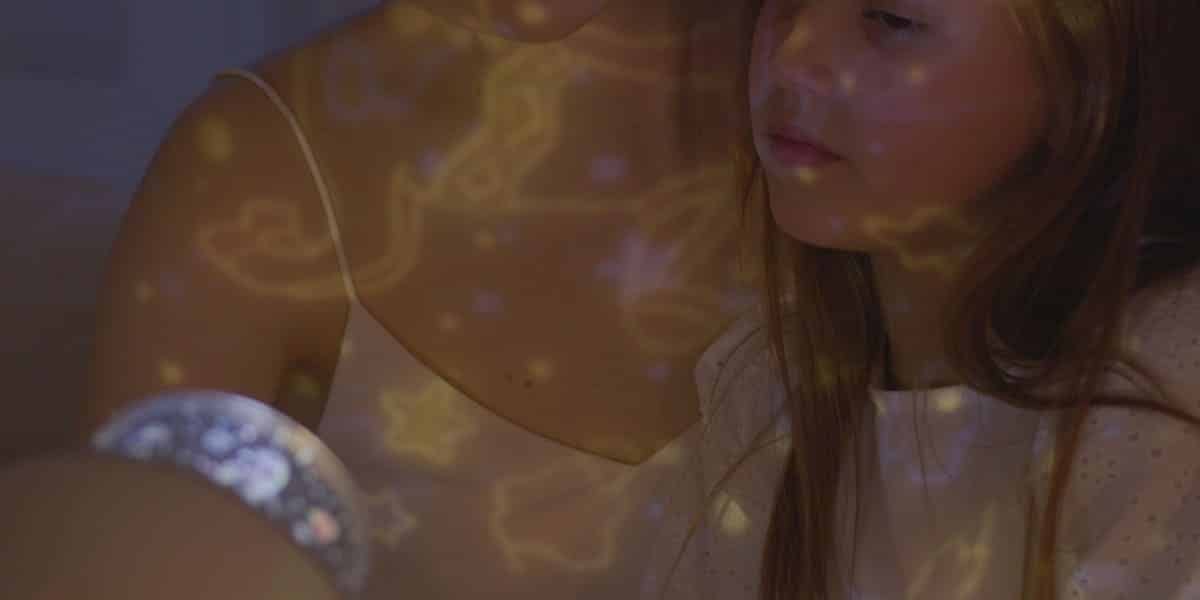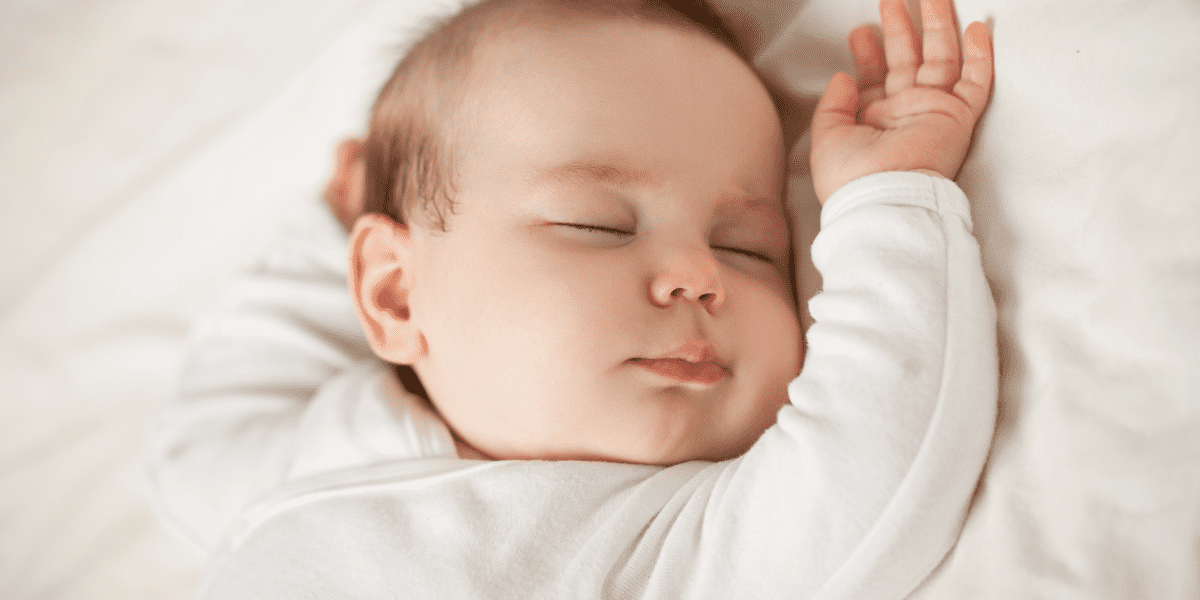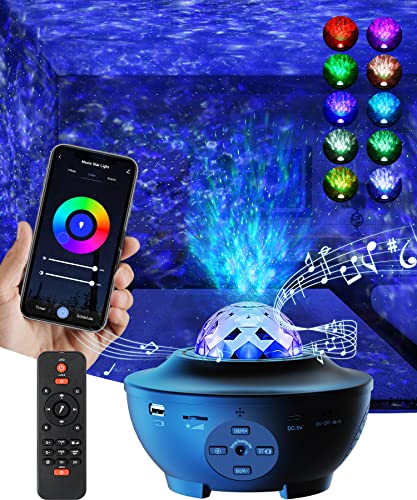Night-lights are a common purchase and are not far from the lips of anybody who has dealt with a child having nightmares. For children waking up frequently, being able to look up and see a visible projection around their room makes their environment seem less frightening, and helps them calm down.
So what about babies?
Babies are notoriously restless sleepers, partially because at the start of their life they require so much constant feeding and tending to. Gestational parents are often left without a free moment when they initially have their child, and moreover, it can be exceedingly difficult to move a baby however old into their own bed.
Waking up constantly, being afraid, or not being able to sleep at all are common for children attached and wanting for their parents. So do baby light projectors help? Do they help babies sleep, and if they do, what kind should you get?
As an Amazon Associate, I earn from qualifying purchases. The links below may be affiliate links. Please read my disclosure policy for more information.
Why would I want a baby light projector?
Although it is true parents are often wanting for a way to soothe restless children, baby light projectors are multi-functional. If you are checking on your baby in the middle of the night, doing so in a dark room can be difficult: but turning the light on may wake your baby up altogether if they are a light sleeper.
Having a light projector on can ensure you can see all the details of the room as it is still in darkness, ensuring you can check on your baby easily and quickly without worrying about waking them up.
Moreover, there is the noted idea that baby light projectors may help a child sleep. Many children ask for and opt for night lights, when they are afraid to sleep in the darkness because they cannot view their surroundings.
Following this logic, many parents try to soothe restless children with a night light projector, which projects cute and beautiful images all around the room that can be of their choice. However, the problem still remains that we cannot ask babies what they want or need, and there may be the issue that night lights actually interfere with the sleep of young children.
Do baby lights put babies to sleep?
It can be easy to believe that night light projects aimed for young babies and children aid in their sleep, because there is a strong market prevalence of such products. You can find simple or complex night light projectors with either simple star and moon illustrations, to complicated ones with water patterns, turning movements for a varied pattern, as well as accompanying white noise sounds and music.
These products do also claim to help young babies and children sleep, but the evidence of this is mixed. Any parent could be forgiven for trying them out, especially considering how restless the sleep of babies can be (particularly after birth).
However, any bright light affects our sleep, and babies appear to be no exception. Studies show that light of a shorter wavelength, also known as blue light, impacts the circadian rhythm of human beings significantly.
The reason why is simple: we respond to blue light because as human beings, we naturally respond to the blue sky and to daylight, which has a shorter wavelength than evenings where the wavelengths in light become longer.
These longer wavelengths are then interpreted by our body as a sign that we should become sleepier and begin to sleep: this is the impact of light wavelength on our circadian rhythm.
Our circadian rhythm is another term for the way our body release and interprets stimuli in order to create a sleep-awake schedule in the brain. Melatonin, the hormone that causes sleepiness in human beings, is inhibited in the brain when our bodies detect blue-light: meaning that we struggle to feel sleepy at all when exposed to it.
Babies are no exception.
It is also why computer screens and phones are notorious for disrupting people’s sleeping rhythms, and why a blue light filter can be an excellent tool for those wishing to cause less disruption to their sleep.
Should I keep my baby’s room dark?

The answer following this should be indeed that yes, keeping your baby’s room dark will help them get better sleep and if they are a newborn, it will also promote their sleep schedule settling into a regular and healthy rhythm.
It is inevitable and not unnatural that your child after birth will have a disrupted sleep schedule for some months, as there are constant feedings happening and your baby is still adjusting their circadian rhythm to the world they have just arrived in. To encourage this circadian rhythm adjusting quickly and properly however, it is a great idea to keep the room dark.
Moreover, the darkness will prevent any inhibition of the hormone melatonin, which means that melatonin can be freely produced and your baby will more easily be able to go to sleep.
Although it may seem soothing to have a night light projector on, it is more likely that this light will trigger your baby’s brain to stay on and avoid sleepiness, as well as distracting them. Avoiding stimulation and keeping your baby in a dark place is great to help them fall asleep.
What light should I use when changing my baby’s diaper?
Of course, your baby will most likely need their diaper changing in the night, as well as feedings. This can be particularly difficult to do in the dark, but if you turn on an overhead light or any light that is blue or bright yellow, you may find that your baby remains “overstimulated”, and cannot return back to sleep.
The medium answer to aim for is a red light. Using a red light will not impact your baby’s sleep.
Red wavelengths are not disruptive at all to our brains at night, and allow us to remain under-stimulated. Studies show that red light does not inhibit melatonin production in our brains, meaning that you can use red lights without worrying it will stimulate your baby, disrupt their sleep or disrupt their circadian rhythm.
Red lights can also provide enough visibility for feeding, changing or just checking in on your baby without waking them up.
Moreover, red lights allow our eyes to remain “dark-adjusted” due to an unusual effect called the Purkinje effect. Red colors often appear “darker” in dark light compared to other colors because the rods in human eyes, which are used to detect in dark light, are not very sensitive to long wavelength light like the color red.
This means that our eyes do not perceive long wavelength light to be as “bright” as other types of light, and moreover, it means that if you look at something in red light, your eyes remain adjusted to the darkness so you can still see well.
This is also why you find red lights used in cockpits, submarines, and in zoo enclosures (as the red light does not disrupt the sleep of animals).
Do night lights help my baby sleep?
Generally speaking, there is not any evidence that any kind of night light will help your baby get to sleep. It is worth noting that red lights are significantly less likely to disrupt the sleep of your baby, and if you want to choose a night light with projection options, movement, or flickering, a red night light can be a good choice.
However, there is little in the way of evidence to demonstrate that this will actually help your baby sleep, and more in the way of evidence that it will not wake them up.
Lights are generally likely to disrupt your baby’s sleep, by distracting them, keeping them up, or more. In particular, changes of color can be distracting for a baby, and short wavelength light like blue light will keep them up in particular.
If you do opt for a night light, avoid these colors and avoid lots of movement. If you do want to choose a night light, a good choice is the many LED-based night lights with an extreme amount of color options.
This way you can customize your night light to be dim with a red light, so it won’t disturb your baby.
Avoiding light with my baby
Now that you understand the impact that light can have a baby, you may be wondering about the impact of blue lights on your baby in general. Many phones come with an option in the modern day to use a “blue-light” filter, which has a significant impact on people’s circadian rhythm.
Blue light, regularly emitted by phones with any blue or white tone, can keep people awake: using a blue-light filter on your phone changes the wavelengths emitted by the screen, grading all the colors you see to a tone much closer to orange to encourage sleep.
The effects are tangible on adults. Babies, who are much more sensitive to their environment in this way, are even more susceptible to disruptions to their circadian rhythm.
So how can you avoid exposing your baby to blue light, and when should you do it?
In particular, experts advise to avoid all blue-light for at least 1 hour before you go to sleep. Although you could use devices with a blue-light filter, the better option is to avoid any backlit devices at all as these contain much more blue light than even an overhead light.
This means removing your baby from an environment where they are seeing any bright backlit screens, including tablets and televisions, for at least 1 hour before bedtime.
Keep any overhead light dim, and try to avoid blue bulbs all over the house. Energy-efficient bulbs in particular use these.
If you are washing your baby before you go to sleep, you may have some difficult avoiding using bright overhead bathroom lights while washing them.
A great alternative are small battery candle lights that are safe to use in wet bathroom environments: in particular, you can often find the sale of light-up rubber ducks that are gently illuminating in the darkness without being disruptive to your baby’s rhythm.
These battery-operated lights can also be useful when you feed or change your baby before bed, so consider investing in some that are safe to use in the bathroom.
Do avoid using projectors that flicker light or show moving images, as these are unlikely to be soothing for your baby and are more likely to stimulate them or wake them up. If you do opt for a night light for your baby, choose red or if not, a deep orange that is used at as dim a setting as possible.
Some parents opt to crack the door open from the hall or bedroom in these times, to avoid disturbing the baby and provide only minimal light. The option that works best for you is the best choice, but keeping your child in the darkness as dark as you can will most likely help them sleep.

Isn’t my baby afraid of the dark?
This is a common misconception: babies are unlikely to be afraid of the darkness at all. This is considered more of a learned fear, as babies actually spend 9 months in the womb in darkness and are better soothed in dark environments.
If your child cries when placed into their dark nursery and left alone, this is more likely due to separation anxiety. Although your baby is small, the thing they do know is that you are a source of warmth and comfort that is abruptly gone.
Babies cry because they are aware of your absence.
The age when babies begin to have fear of darkness or being in the dark is when they are around 2 years old. If your baby is afraid at this time in their development, it can be a good investment to buy a red light that will illuminate the room for them.
This will have the least impact on their melatonin and sleep cycle, and allows their eyes to stay dark-adjusted too.





